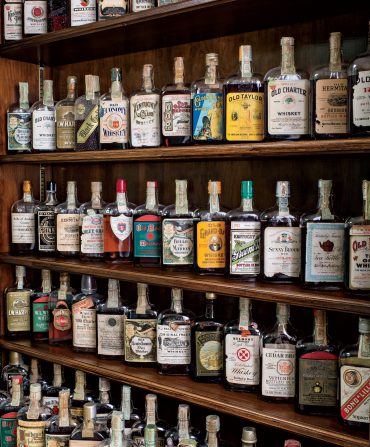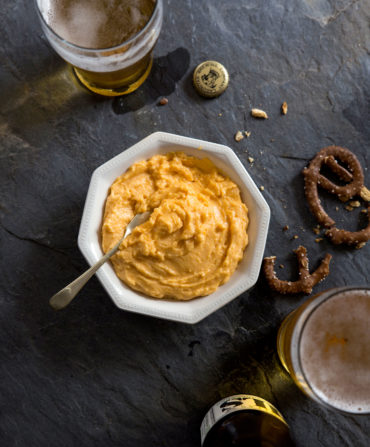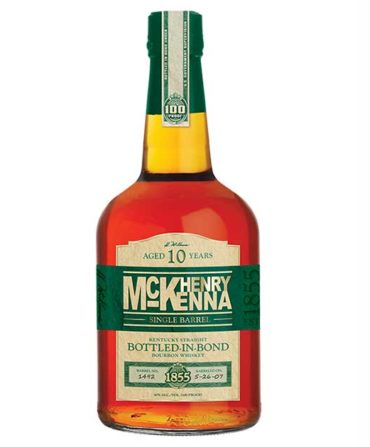For Sara Bradley, no bourbon is too good to drink. During a dinner with the chef at her restaurant, Freight House, in Paducah, Kentucky, Bradley leaves the table and comes back with a sample-sized glass bottle labeled with smudged Sharpie: “Old Fitz 83 BIB.”
Old Fitzgerald, 1983. Bottled in bond.
“It’s a very rare bourbon,” she says, “and this is all I have left.” A two-ounce shot of smooth maple and oak, decades in the making. We sip the tipple between courses of beer cheese and local pork shoulder with greens, field peas, and fresh-milled cornbread. “If you have it,” she says with a shrug, “why not drink it?”
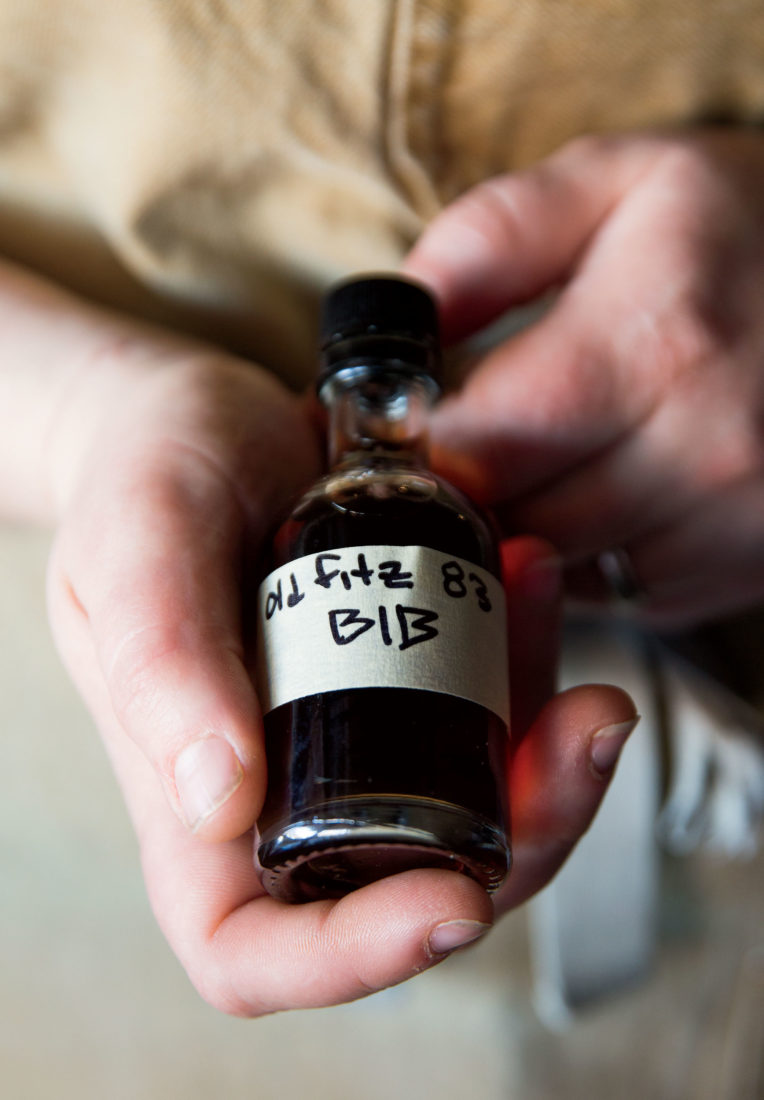
Photo: Luis Garcia
A sample size of 1983 bottled-in-bond Old Fitzgerald.
When Bradley was growing up in Paducah, bourbon was a fact of life—not a collectible. “My dad would go to the store and load up on big bottles of Eagle Rare and Old Charter ten-year, and lots of Elijah Craig,” she says. “We’d bring it to family gatherings and drink it all, because it was delicious. It wasn’t a big deal.”
Over the years, as Bradley left her hometown—first for the University of Kentucky and then for culinary school in Charlotte, North Carolina—and worked her way up through prestigious kitchens in New York and Chicago, she considered herself a wine drinker, mostly. Then, one day, she opened her liquor cabinet and counted twenty open bottles. A preoccupation with bourbon had begun to take hold.
She moved back to Paducah in 2015, renovated an abandoned vegetable depot near the Ohio River, and opened Freight House, the small city’s first modern farm-to-table restaurant.
The community was eager to lend a hand, beginning with her own family. Her mother, a former social worker, volunteered to make desserts. Her father helped her build a collection of more than five hundred bottles of new and rare bourbon that now spills from the menu at the restaurant to overloaded shelves and stacks of cardboard boxes at her nearby home.
“He and I cruised liquor stores together,” Bradley says. “We’ve scrounged up all the good dusties”—like a bottle of 1982 Old Grand Dad, for instance, and a 1981 Heaven Hill. “There’s nothing left around here.”
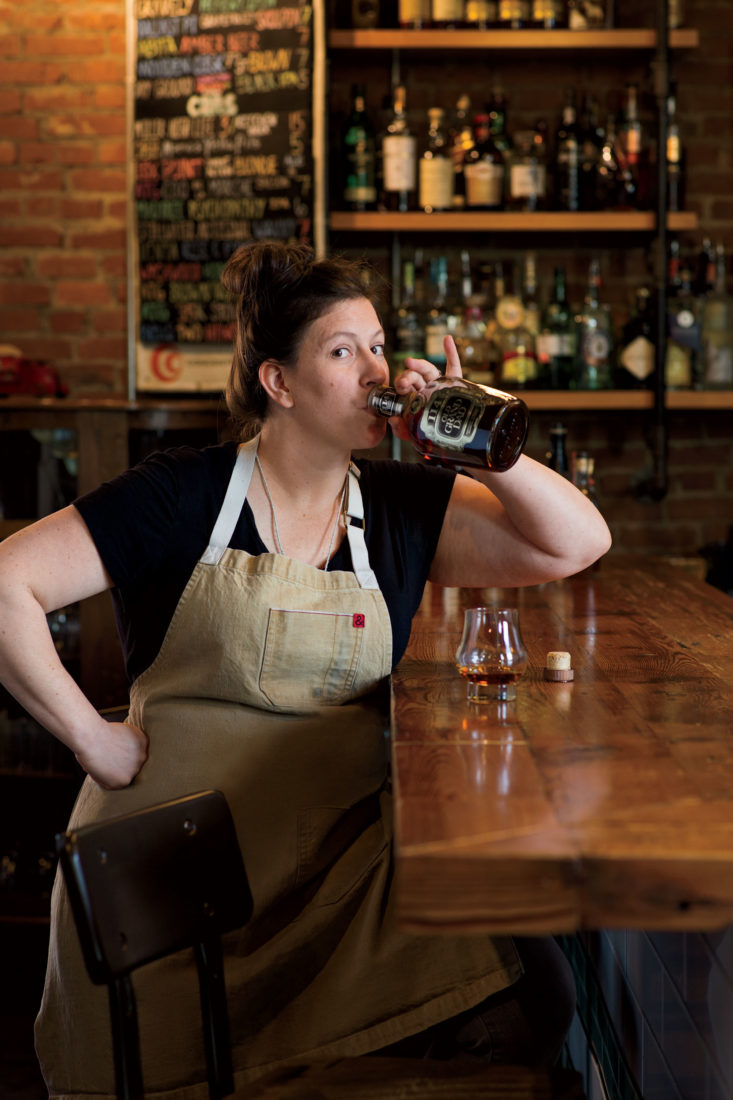
Photo: Luis Garcia
Bradley takes a nip of Old Grand Dad.
As word of the collection spread, people began to seek her out with gifts and leads. When a local businessman bought a liquor store that had been closed for five or six years, he invited the chef and her friends to raid the shelves. She signed up for online bourbon marketplaces. Her vintage bottles have come from so many sources that she can’t necessarily remember where she got a 1981 bottle of ten-year-old Ancient Ancient Age, or a 1984 Wild Turkey released only in Japan. Others came from dear friends, such as a 1974 Kentucky Derby–themed decanter full of Jim Beam.
Bradley’s bread and butter, though, is her encyclopedic collection of more current releases. “We have mostly complete sets at the restaurant,” she says. “Almost everything Buffalo Trace distills is on the menu, and every Knob Creek, and every Woodford Reserve, and every Barton. We have every Michter’s but one, and every Pappy. We used to have every Kentucky Owl, but we drank a few. I have to have it all. It’s become an obsession.”
Bradley also snaps up barrel picks—bottles selected from specific barrels by seasoned palates, those of people she cites as if they were household names: Jamie Farris of Lincoln Road Package Store in Hattiesburg, Mississippi; Dixon Dedman of Kentucky’s historic Beaumont Inn. “If you want to be a collector, but you can’t get your hands on dusties, or you don’t want to pay a lot of money for them, you should be looking for barrel picks,” she says of the bottles, which can generally be found at top-tier liquor stores. The flavor of each pick depends on the rickhouse where it aged, the level where it sat, the character of the barrel itself, and many more microfactors that conspire to transform fifty-three gallons of white dog while it rests.
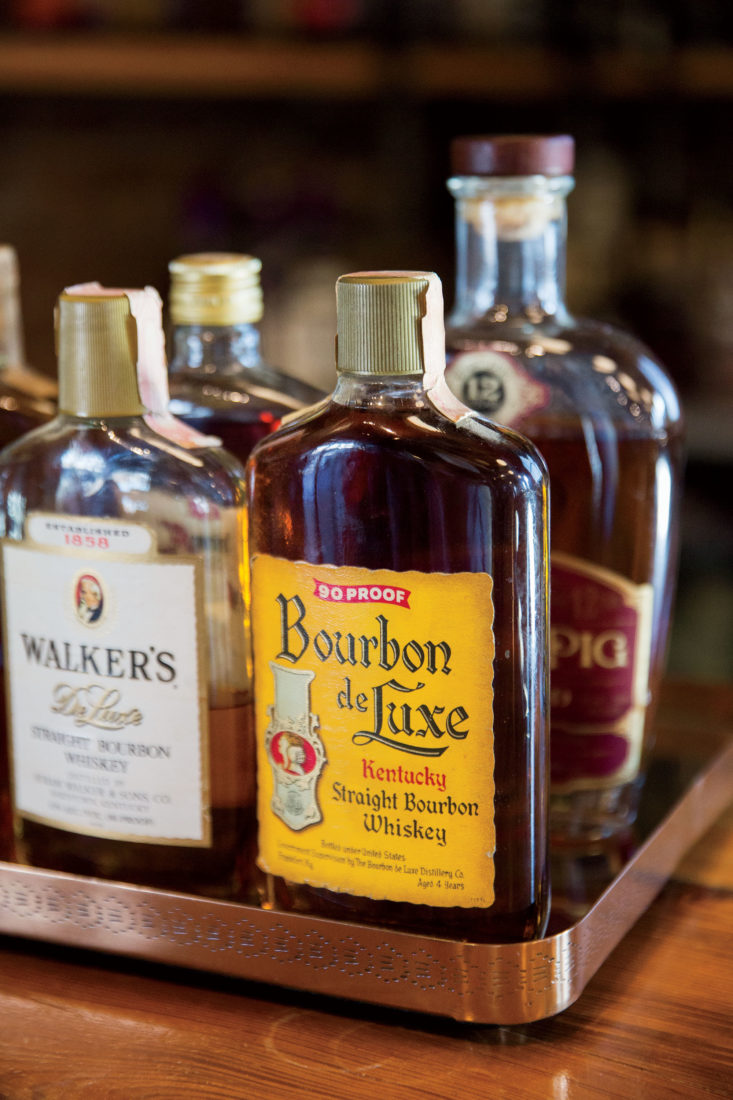
Photo: Luis Garcia
Several of Bradley’s prized “dusties.”
Bradley selects her own barrel picks, too. She likes barrels with funk and must and even grossness, a term that one famed distiller has laughingly advised her not to use, imparted by the oldest, moldiest, most character-saturated rickhouses.
And she’s happy to freely pour what she finds. Only two of her hundreds of bottles are off-limits, and only for sentimental reasons: She’s set one bottle of Pappy aside for her wedding anniversary, and another, of Willett, for her father’s retirement. Otherwise, it’s all communal.
“Bourbon is an art that takes so many people,” Bradley says. “You have the people who are making the barrels, charring the barrels, and distilling the whiskey—and the farmers who are growing the grain in the first place. There’s a lot behind a beautiful little glass of whiskey, and I’m proud to share it.”



